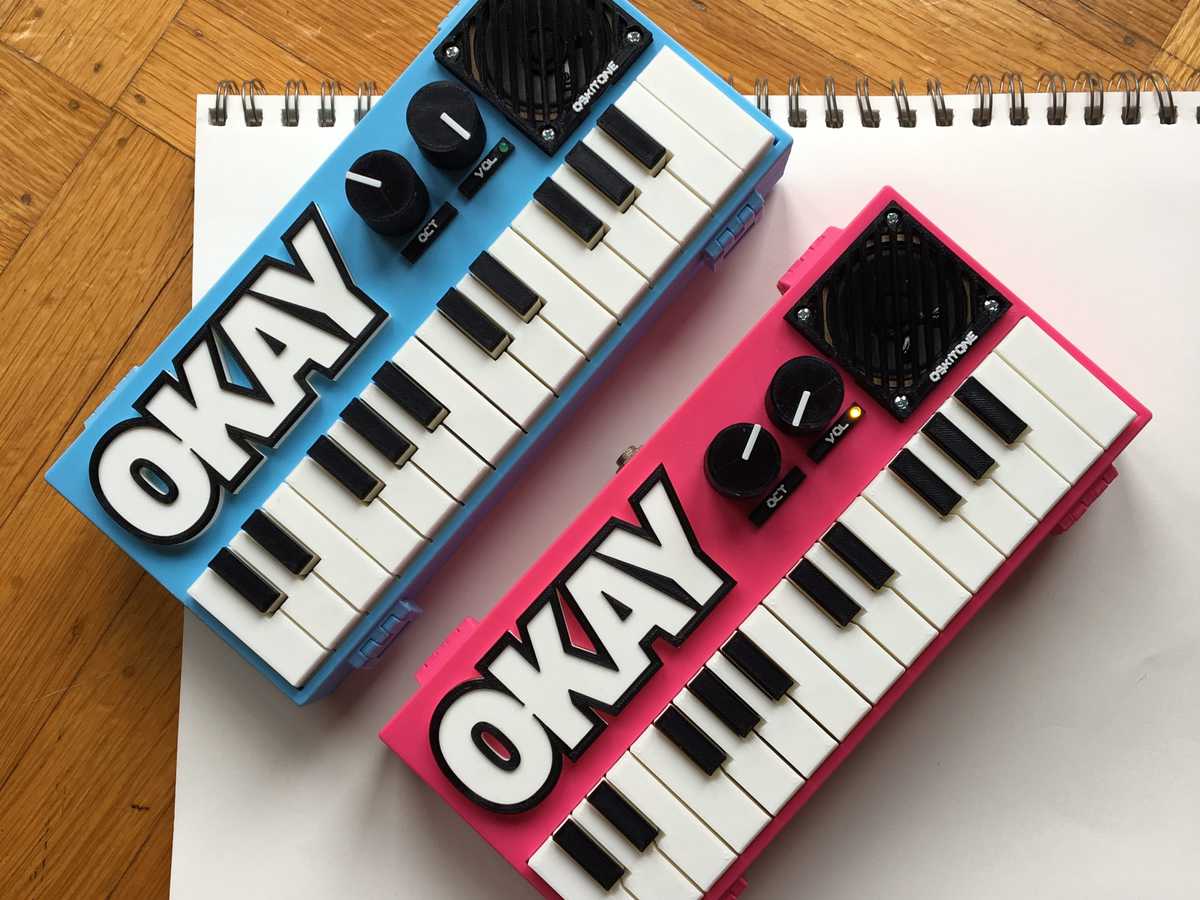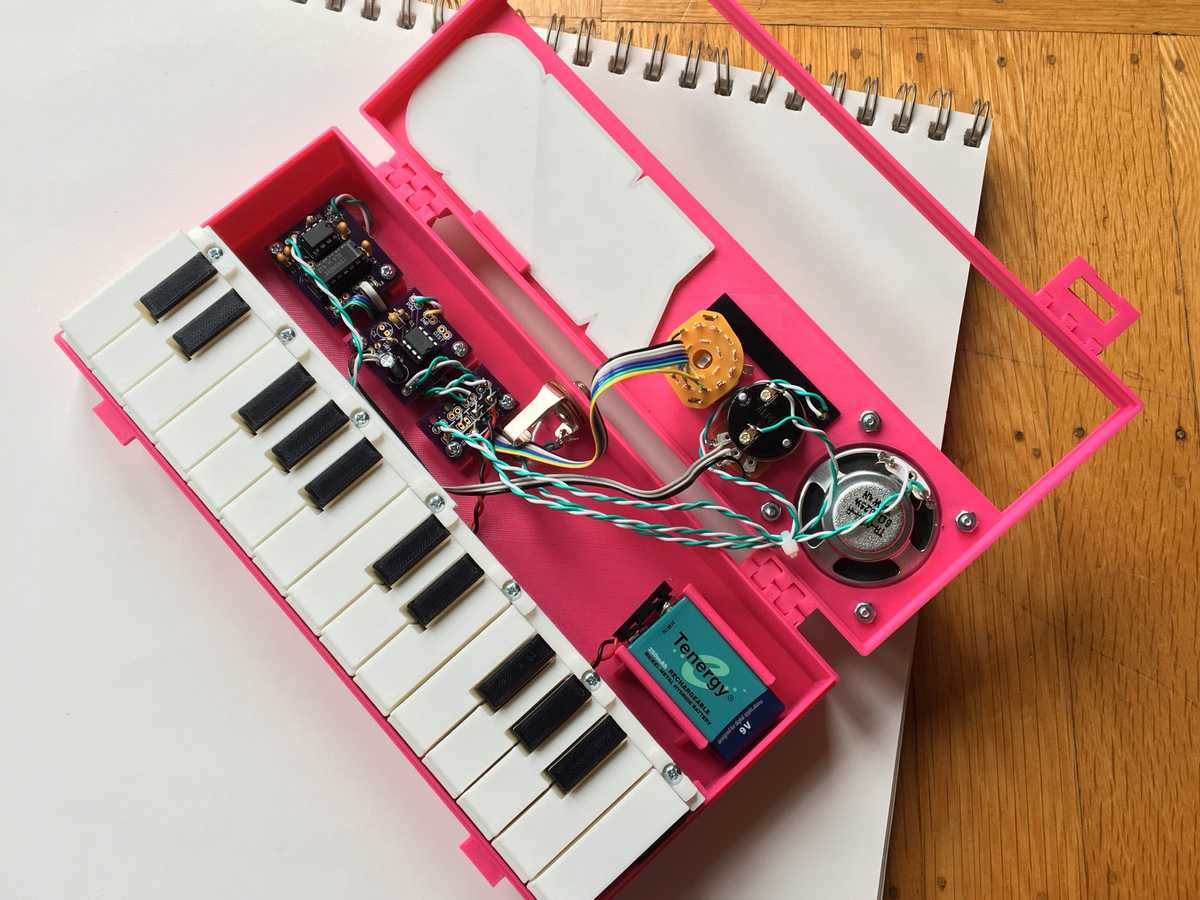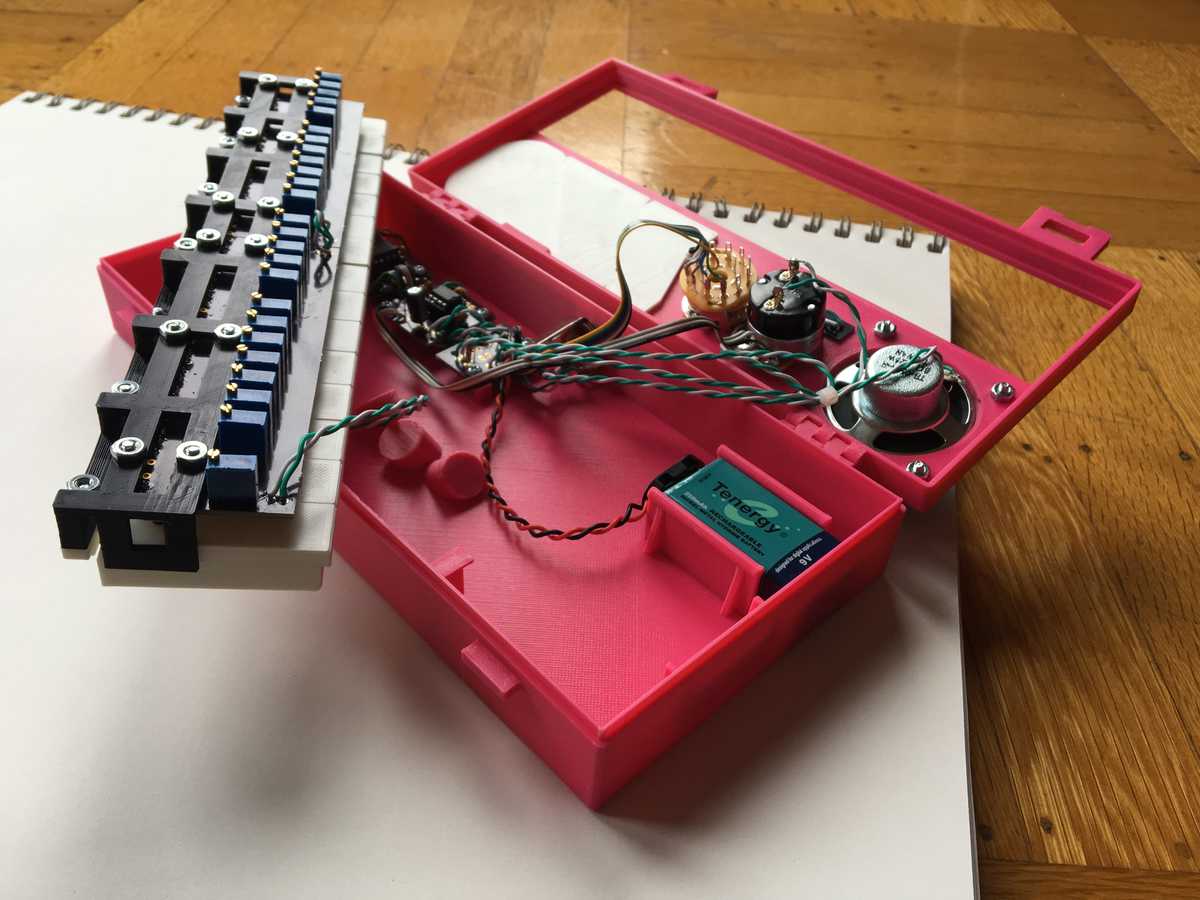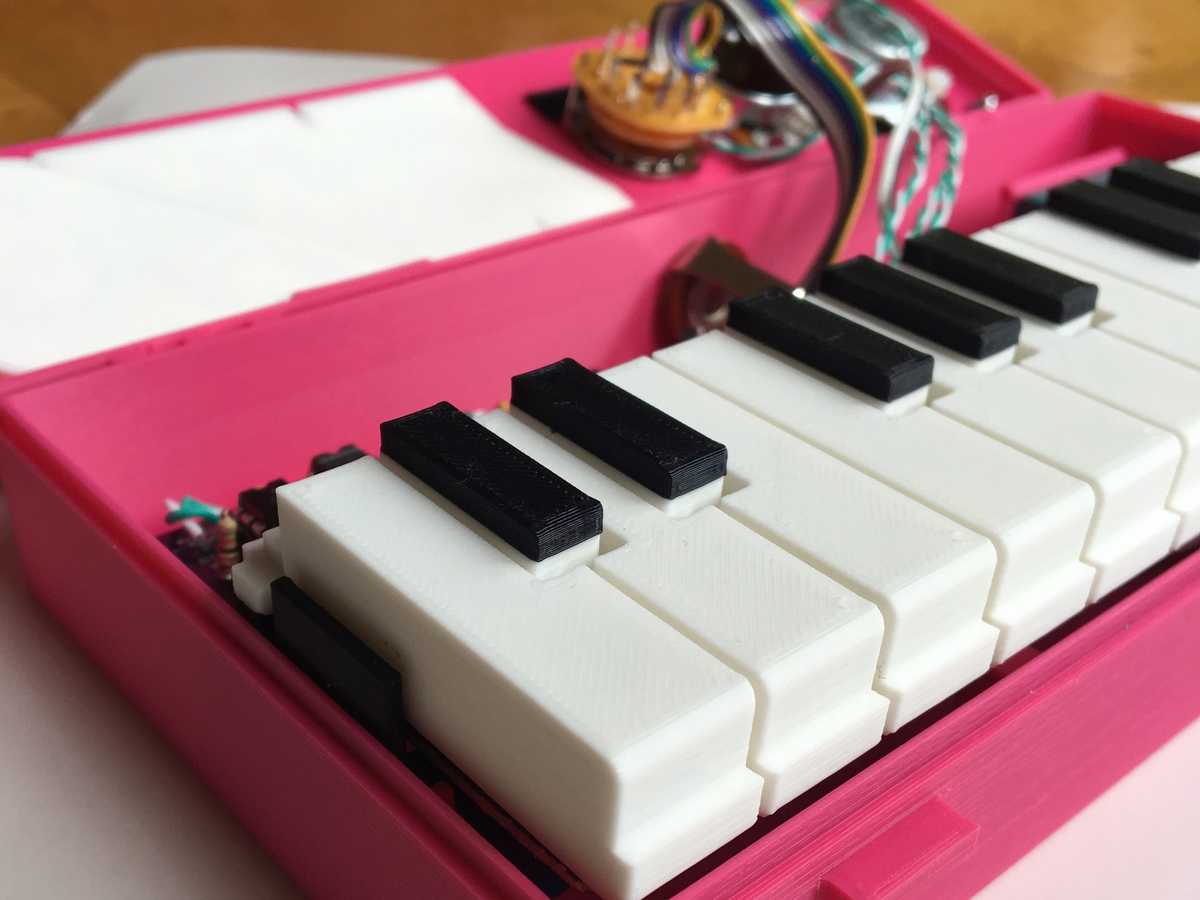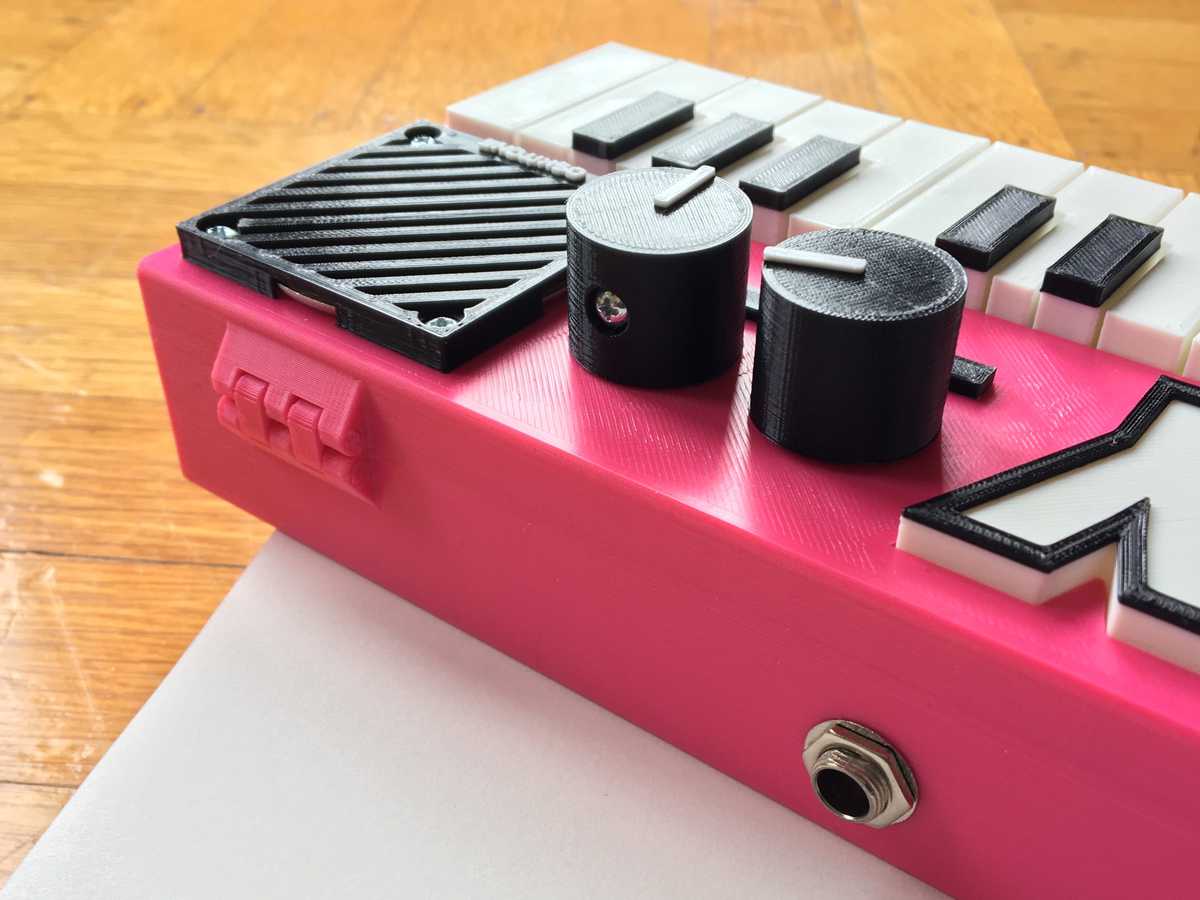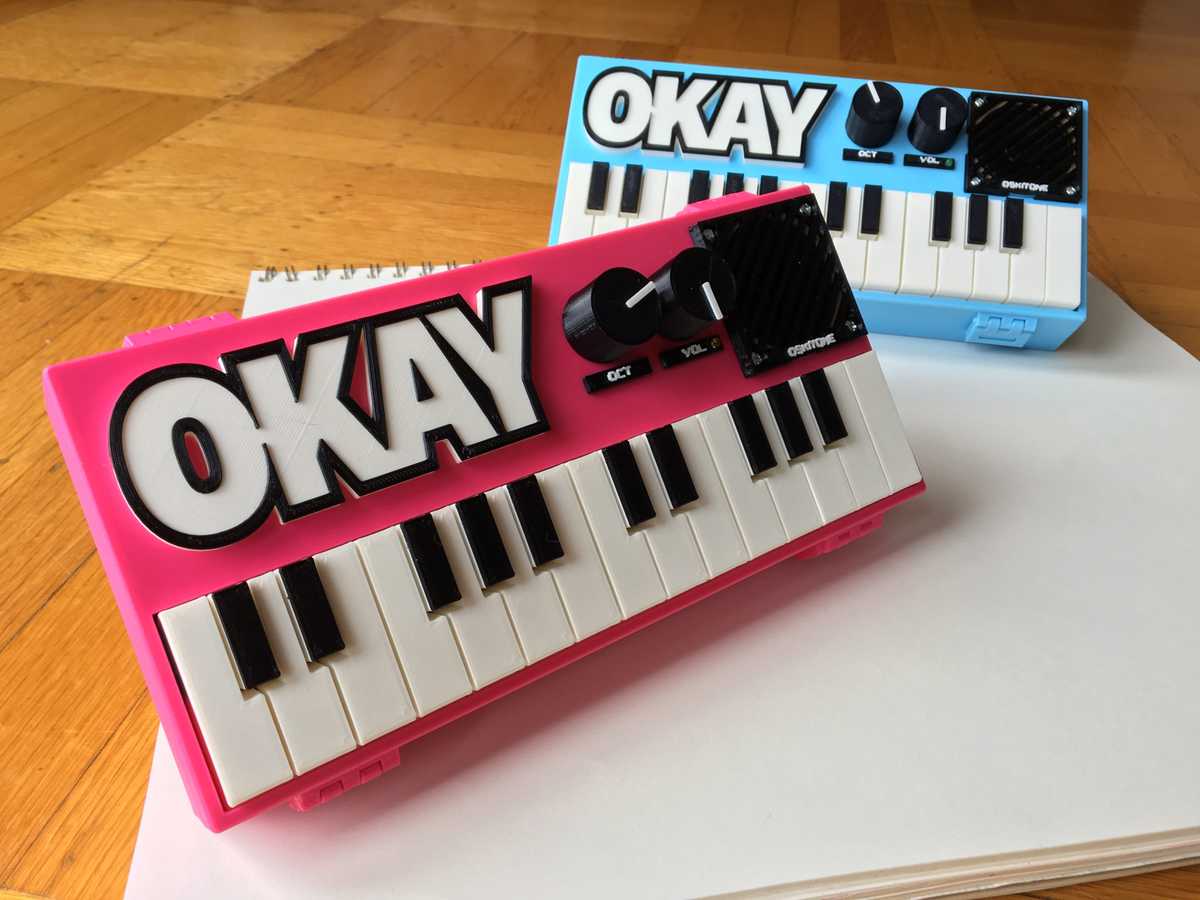OKAY 2 Synth
The long awaited Oskitone OKAY 2 Synth is finally done and ready to share! It looks like this:
And it sounds like this:
Oskitone OKAY 2 from oskitone on Vimeo
Just like the first OKAY Synth, the OKAY 2 is an analog, monophonic, square wave synthesizer. It uses the very same modular PCBs, octave and volume controls, and speaker as the OKAY 1, and all of it was designed by me in OpenSCAD and EAGLE as usual.
The biggest noticeable difference is that it now has two octaves of keys instead of just one!
New features
Of course, there are less noticeable but still important changes:
-
Completely redesigned key mounting
The OKAY 1's keys are mounted to the enclosure top, and its buttons are separately mounted to the enclosure bottom.
More keys, however, means a wider keybed, which naturally starts to lose structural integrity as it grows -- plastic alone can only be so rigid. In the center of the instrument, the enclosure top and anything mounted to it want to bow up and away from the enclosure bottom and anything mounted to it. Because piano keys effectively act as levers, that bowing unfixed the lever's fulcrum (the fixed point at the back of the keys) and made playing unreliable.
So how could I design it in such a way as to be both mechanically reliable and aesthetically/functionally accessible?
The answer is to mount the keys and buttons together onto a separate "cradle" piece that nestles into the enclosure bottom. (Here's an instagram video of the proof of concept.)
With the removable key cradle, the tuning trimpots can be soldered to the bottom side of the PCB, which would otherwise be unreachable, obviating the OKAY 1's actuator pegs.
-
Key travel distance improvements
The OKAY 2's keys now have a front lip that gets held down when the enclosure is latched closed; this ensures they're as close the buttons as possible, minimizing vertical travel distance on key press. The key's back clearance has also been minimized so the keys are held down there too, especially the unlipped accidentals.
-
Audio out jack
I teased a prototype Oskitone amp on Instagram, but it's an awkward product to have when the flagship OKAY 1 can't hook up to it. The OKAY 2 has a dedicated 1/4" audio out jack, which will automatically mute the built-in speaker when something's plugged into it.
After tuning a couple OKAY 2s, my ears were happier with this upgrade!
-
Built-in display stands
I wanted an easy way to display this thing on a shelf or on my desk. I considered making a separate stand and even spent a day designing an integrated "kickstand" hinge, but instead I went even simpler: prop up the OKAY 2 by sticking a writing utensil into one of three angled holes on the enclosure bottom.
This idea, as well as the "OSKITONE" brand engraving, were borrowed from the prototype amp linked above.
And un-features
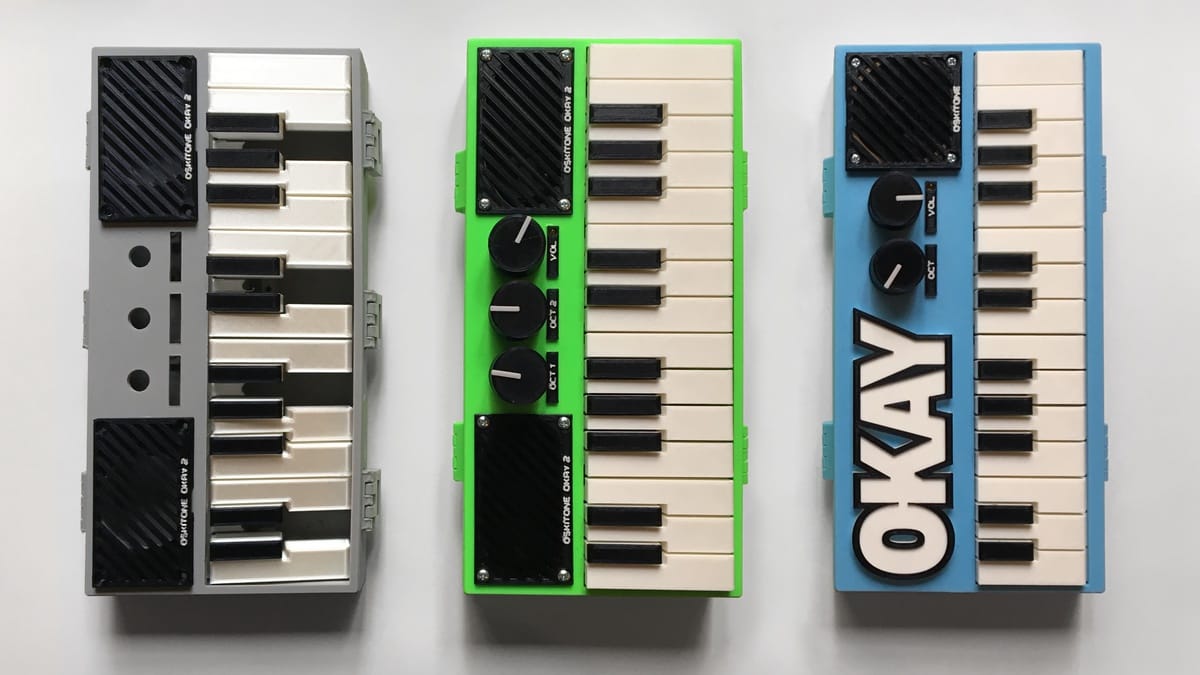
Prototype builds: draft print with longer/broken(!) keys and two speakers, the same design assembled and not totally broken, and the aaalllmost final design
Dieter Rams said "Less, but better." It wasn't always an easy decision, but here's what the OKAY 2 doesn't have:
-
Power jack
I built a prototype unit with a 9v input power jack, the same ones I had for the prototype amp and that guitarists use with guitar pedals. It was nice to have but not imperative and increased cost, so I removed it.
-
Stereo
I also played with the idea of having two amplifiers or two separate octaves with individual amps and speakers. It was interesting and didn't require any new PCBs, but I still scrapped it for simplicity's sake. I even scrapped having two speakers wired together.
-
Longer keys, different action, or other playability changes
Remember how I said piano keys act as levers? I learned about something called mechanical advantage, which is a measure of how easy a lever's load is to move relative to the effort required to move it. Musicians might call this "action" or even "playability".
On one early design, I calculated and animated the keys' mechanical advantage as their underlying buttons moved on the Y axis.
Pretty interesting! ... but I abandoned it when I switched to the cradle key mounting design, deciding to to fix one real problem rather than optimize a non-problem. The OKAY 2 has the same size keys and playability of the OKAY 1 -- just more of them.
Making the OKAY 2
After writing about how I make time-lapse videos, I made a time-lapse video of soldering and assembling a hot pink OKAY 2. It's cool; check it out!
Making an OKAY 2 Synth from oskitone on Vimeo
Availability
Now available at Oskitone.com, fully assembled or as a DIY soldering kit, available with and without the 3D printed parts.
The STL model files are on Thingiverse.
Oskitone IRL!!
On the day I put the OKAY 2 on the store, I gave my first ever real life elevator pitch at a meetup called the Hardware Developers Didactic Galactic!. I wore my most confident shirt and was really nervous but I think people liked it. There's no video of my 2min talk but I did get a nice video on Twitter from just after the main talks.
this is OKAY 2 available on @tindie #HDDG https://t.co/8We1GVoToQ
— Supplyframe Hardware (@SupplyframeHW) January 12, 2018
Thanks for reading
I put a lot of time into the OKAY 2, I'm proud of it, and I like it a lot.
I hope you like it too.
